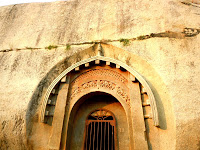Bengal is well known for its sweets. When we say Bengali sweets, Rossogolla comes on top of our mind.
But there are a lot more sweets in Bengal that deserve mention. Come winter, homemade sweets become the hot favourite!
Shankranti is celebrated with homemade traditional sweets known as pithe (p-e-e-tt-he) in the local language.
Patali gur or jaggery made out of date palms is the common ingredient or sweetener for these sweets. Not only does it add colour to the sweet, the flavour makes the sweet even more delicious.There are a variety of pithes- Pattishapta, Pulir pithe, Gokul pithe, sweet potato pithe, Chitoi pithe, and the list goes on. If you are fond of sweets, you must visit Kolkata during winter, not only are the shops full of yummy sweet meats, if you are lucky you will find some of the sweet shops selling pithes as well.
The most popular breakfast during winter in Bengal is Karaishootir kochuri (peas kachori). These are essentially puris stuffed with sweet peas. The peas are grinded with masalas and made into a paste. This is used as a stuffing for the puris. The dough for the puri is made out of maida (all purpose flour) and not atta (whole-wheat flour). Karaishootir kochuri is usually accompanied with aloo dum and dhaniya patta chutney.
Just talking about is making my mouth water. My brunch today was Karaishootir kochuri, aloo dum with dhaniya patta chutney followed by Pattishapta.
What more can I ask for? Life is good.
But there are a lot more sweets in Bengal that deserve mention. Come winter, homemade sweets become the hot favourite!
 |
| Pattishapta-Bengali sweet |
 |
| Pulir pithe |
Patali gur or jaggery made out of date palms is the common ingredient or sweetener for these sweets. Not only does it add colour to the sweet, the flavour makes the sweet even more delicious.There are a variety of pithes- Pattishapta, Pulir pithe, Gokul pithe, sweet potato pithe, Chitoi pithe, and the list goes on. If you are fond of sweets, you must visit Kolkata during winter, not only are the shops full of yummy sweet meats, if you are lucky you will find some of the sweet shops selling pithes as well.
 |
| Karaishootir Kochuri (peas kachori) |
Just talking about is making my mouth water. My brunch today was Karaishootir kochuri, aloo dum with dhaniya patta chutney followed by Pattishapta.
What more can I ask for? Life is good.














